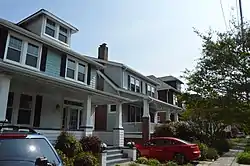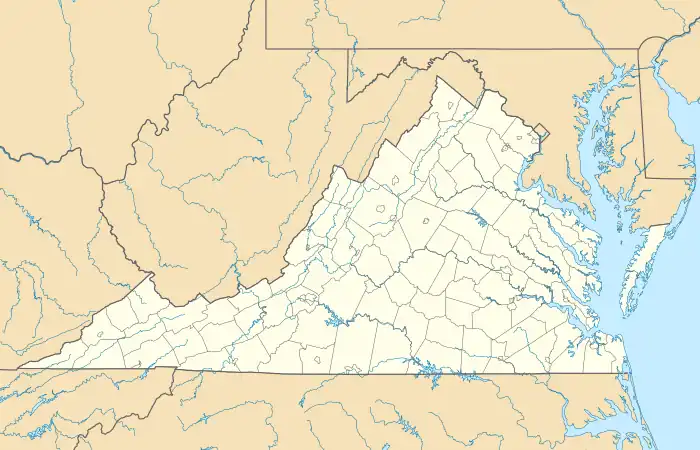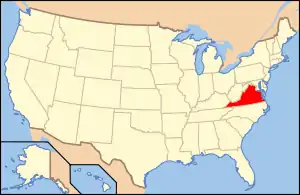Colonial Place | |
 Houses on Delaware Avenue | |
  | |
| Location | Roughly bounded by the Lafayette River, Knitting Mill Creek, East Haven Creek, and 38th St. in Norfolk, Virginia |
|---|---|
| Coordinates | 36°53′05″N 76°17′20″W / 36.88472°N 76.28889°W |
| Area | 202 acres (82 ha) |
| Built | 1903 |
| Architect | George Dillard et al. |
| Architectural style | Queen Anne, Colonial Revival, et al. |
| NRHP reference No. | 02000532[1] |
| VLR No. | 122-0825 |
| Significant dates | |
| Added to NRHP | May 22, 2002 |
| Designated VLR | June 13, 2001[2] |
Colonial Place is a residential neighborhood in Norfolk, Virginia. It is a peninsula bordered by 38th Street on the south, and surrounded on three sides by the Lafayette River. It is a relatively racially mixed area that includes mostly single family homes and a few apartment buildings. Many large homes front the water and Mayflower Road arches around the shore of the river.
The Colonial Place Historic District is a national historic district listed on the National Register of Historic Places in 2002.[1] It encompasses 1,090 contributing buildings and 4 contributing sites in a primarily residential section of Norfolk. It is a middle-class and upper middle-class residential neighborhood that largely developed during the period 1903–1941. The neighborhood includes notable examples of the Queen Anne and Colonial Revival styles. Notable buildings include the Richard W. Peatross House (1908), Taylor House (1908) and Stuart Elementary School.[3]
References
- 1 2 "National Register Information System". National Register of Historic Places. National Park Service. July 9, 2010.
- ↑ "Virginia Landmarks Register". Virginia Department of Historic Resources. Archived from the original on September 21, 2013. Retrieved March 19, 2013.
- ↑ Laura V. Trieschmann and Jennifer J. Bunting (October 2000). "National Register of Historic Places Inventory/Nomination: Colonial Place Historic District" (PDF). Virginia Department of Historic Resources. and Accompanying photo and Accompanying map Archived November 11, 2013, at the Wayback Machine


